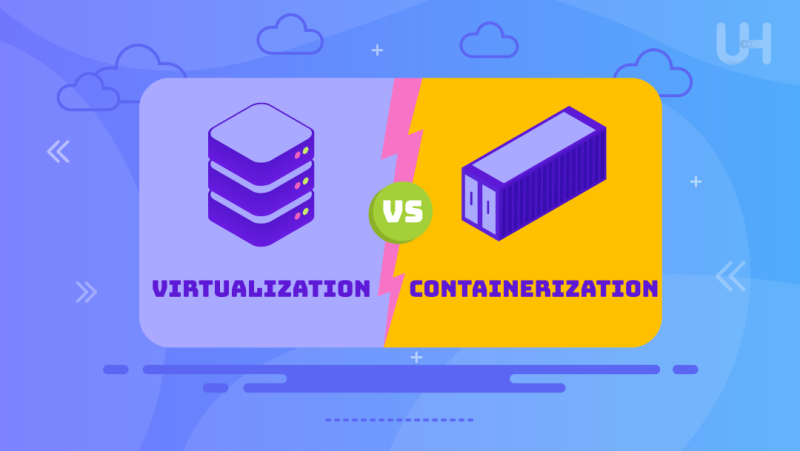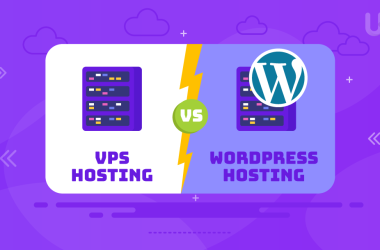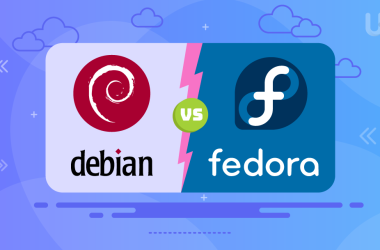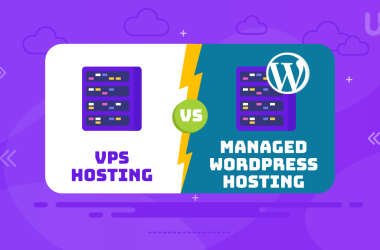Virtualization and containerization are two technological evolutions that have changed the face of application deployment and management in today’s IT environments. While both concepts are pivotal in modern technology, they fulfill different needs and come with their advantages to meet various operational requirements. The difference between virtualization vs containerization will have a significant say in enabling an organization to choose the right solution for its infrastructure and application requirements.
In this article, we will explain virtualization and containerization, show how they work, and discuss the use cases to help you decide on your infrastructure needs.
What is Virtuaization?
Virtualization is a technique that allows a single physical server to share running several VMs, each running its own OS or applications in isolation. VMs are managed using hypervisors, which act between the VMs and hardware. Bare metal hypervisors run directly on the hardware; these are Type 1 hypervisors for better performance.
Since VMware provides software virtualization, enabling efficient sharing of bare metal server resources through optimization of resource utilization with increased processing powers, multiple virtual machines result.
Benefits of Virtualization
- Resource Optimization: Virtualization combines multiple virtual machines onto a single physical server, maximizing resource utilization and reducing energy consumption.
- Disaster Recovery: Virtualization enhances disaster recovery by enabling quick VM replication and backup. In the event of a system failure, organizations can swiftly restore services with minimal disruption, and it also simplifies disaster recovery testing to ensure backups are effective.
- Cost Savings: Virtualization consolidates multiple physical servers into virtual machines (VMs) on a single host, reducing hardware needs and costs related to equipment, energy use, and data center space. Popular solutions like KVM VPS hosting also lower capital and operational expenses.
- Isolation: Each virtual machine operates independently, ensuring high isolation between applications. This enhances security from DDoS attacks by containing vulnerabilities within individual virtual environments.
- Flexibility and Scalability: Virtual machines can be easily scaled up or down, allowing for rapid provisioning and deployment of new instances in response to changing workload demands.
- Compatibility: Virtualization enables the simultaneous running of multiple operating systems, facilitating the migration of legacy applications without requiring significant modifications.
Limitation of Virtualization
- Overhead: The abstraction layer created by virtualization introduces performance overhead due to the emulation of hardware components, resulting in a slight decrease in overall system performance.
- Resource Overcommitment: Oversubscribing resources among virtual machines can lead to competition and performance degradation. This situation requires careful resource management.
- Complexity: Managing a virtualized infrastructure can be complicated and requires expertise in hypervisor technologies, network configurations, and storage management.
- Limited Density: Unlike containerization, virtual machines are heavier and require more memory and storage resources per instance. This requirement can limit the number of concurrent instances running on a single server.
What is Containerization?
Containerization is a virtualization technique that focuses on running multiple isolated processes within a single operating system instance. In contrast to traditional virtualization, which aims to run multiple operating system instances on a single server, containerization allows multiple user spaces to operate independently. This approach is particularly beneficial for cloud storage users who intend to run several processes simultaneously.
Containerization involves packaging software code, libraries, frameworks, and other dependencies into an isolated container environment. These portable containers can be deployed on any infrastructure that supports container technology.
Benefits of Containerization
- Resource Efficiency: Resource utilization improved because there is only one operating system in instances. Running a different one for every instance is unnecessary because each container host shares an operating system kernel.
- Rapid Deployment: Containers can be quickly built and deployed, which means they integrate smoothly into continuous integration and delivery pipelines, enabling agile development practices.
- Scalability: Containers enable horizontal scaling by replicating instances across a cluster, effortlessly handling increased workloads, and facilitating fault-tolerant architectures.
- Portability: Containers encapsulate applications and their dependencies, making them highly portable across different environments, such as development, testing, and production.
Limitation of Containerization
- Limited Isolation: Containers share the underlying host kernel, which introduces a degree of vulnerability to the host system. One of the most significant containerization disadvantages is that if one container’s security is breached, it affects the security of all other containers, not just the host itself.
- The complexity of Orchestration: Managing containerized applications at scale can be challenging, requiring the implementation of container orchestration tools, like Kubernetes, for automated deployment, scaling, and service discovery.
- Compatibility Issues: Containerized applications may encounter compatibility issues when interacting with host hardware or software, requiring careful consideration during development and deployment.
- Persistence & State Management: Containers are designed to be ephemeral, making it challenging to handle stateful applications that require persistent storage or complex data management.
Elevate Your Hosting Game with UltaHost VM Hosting!
Discover the perfect balance of virtualization and containerization with UltaHost VM Hosting. With UltaHost VM Hosting ensures seamless integration and maximum efficiency, whether virtualizing environments or deploying containers.
Review Primary Features Between Virtualization vs Containerization
A container engine can easily manage large numbers of containers to create, add, and remove containers as required. The maintenance of containers is also relatively easy since we only need to update, patch, and fix bugs on one operating system. In addition, containers can reduce hardware costs since they improve hardware utilization efficiency. They make this possible by allowing several applications to run on the same hardware.
If you compare virtualization to containerization, the latter is an improvement. But it’s not without its disadvantages. The most critical of these are data security and data privacy. Partitioning a server via containers makes the server more susceptible to a breach. Whatever vulnerability exists in the host kernel will affect all the containers. Furthermore, the compromised container can’t be terminated and replaced with a new, clean image in the case of malware.
Compared to virtualization, sometimes containers miss out on essential security features. All the applications running on the server run on the same operating system. Since one operating system powers all the containers on the server, the adaptability and diversity of the supported applications become limited. The limitation results in keeping the system secure with more difficulty.
Key Difference Between Virtualization and Containerization
| Factor | Virtualization | Containerization |
| Speed | Slower startup and resource allocation. | Faster startup and resource allocation. |
| Resources | High resource overhead. | Minimal resource overhead. |
| Security & Isolation | Strong isolation between VMs. | Less isolation, but improved with features. |
| Portability | Limited portability between platforms. | Highly portable across different platforms. |
| Operating System | Multiple OS instances. | Shared OS kernel. |
| Application Lifecycle | Longer deployment and scaling. | Quick deployment and scaling. |
Virtualization vs Containerization Differences Explained

Speed Between Virtualization vs Containerization
Virtualization emulates hardware and boots complete operating systems, slowing startup times and creating resource allocation issues. In contrast, containers use the host machine’s OS kernel, allowing for faster startups and more efficient resource use.
This quick startup is advantageous for software development teams because it saves testing time. Virtual machines, however, need significant time to boot the entire OS, resulting in longer startup times than containers.
Virtualization vs Containerization: Resources
Virtual machines (VMs) require significant resources as they run complete operating systems, with each VM needing its own OS, drivers, and libraries. This results in higher overhead and memory usage, even when idle. In contrast, containers share the host OS kernel, leading to minimal overhead and efficient resource utilization.
While CPU virtualization is inexpensive, VMs are still more resource-intensive. Containers, on the other hand, are faster to start and consume less memory since they don’t require a hypervisor.
Security & Isolation
Virtualization offers strong isolation between virtual machines (VMs), each running independently with its operating system, enhancing security and preventing application interference. While containerization lacks the same isolation level, features like user namespaces and Linux Security Modules (LSM) have improved its security.
In virtualization, VMs remain separate, so an infected VM does not affect others, allowing for independent security protocols. Conversely, containers isolate data and applications at the process level, leading to a less secure environment that relies on the host system’s security measures.
Portability & Application Sharing
Due to hardware architecture and hypervisor compatibility, virtual machines (VMs) have limited portability across different platforms. In contrast, containers are highly portable because they bundle applications with their dependencies, ensuring consistent operation across various environments.
Container images are smaller and easier to transfer than VMs, which require copying an entire operating system and related files, increasing their size and complexity for sharing. Containers can be easily shared through various online hubs, while VMs need to be uploaded to other servers for transfer.
Operating System Requirements
Virtualization enables managing multiple operating systems, making it ideal for businesses with diverse applications. A virtual machine is suited for applications needing dedicated OS instances, while containers that share the host OS kernel are better for homogeneous environments. If applications have similar OS requirements, containerization is a more practical choice.
Application Lifecycle
Virtual machines (VMs) have a more extended deployment and scaling process since they require booting the entire operating system, making them suitable for applications that run for extended periods. VMs excel in handling long runtimes within a robust virtualized environment.
In contrast, containers are lightweight and allow for rapid deployment and scaling by only starting necessary functions. They are ideal for short-term application needs due to their quick setup, portability, and faster startup times. However, containers need a dedicated operating system, processing power, and storage resources. Choose containers to optimize server resource efficiency.
What To Choose Between Virtualization vs Containerization?
Virtualization is particularly effective in scenarios requiring strong isolation, multiple operating systems, and support for various application environments. It is well-suited for running legacy applications, complex enterprise systems, and situations where each workload needs dedicated resources.
On the other hand, containerization excels in environments that emphasize agility, scalability, and resource efficiency. It is ideal for modern cloud-native applications, microservices architectures, and DevOps practices, where rapid deployment, easy scaling, and portability are crucial.
Determining which technology is mainly superior depends on specific requirements and use cases. When comparing virtualization and containerization, it’s clear that each serves a distinct purpose. The choice between the two relies heavily on the user’s application needs and the required server capacity.
Choosing one approach over the other is a significant decision. IT managers should carefully consider the key differences between containerization vs virtualization technologies before making a choice. To assist in your decision-making process, we have outlined the benefits and drawbacks of each technology in the following sections.
Conclusion
Virtualization and containerization are potent tools for modern IT infrastructure. While both offer significant benefits, they serve different purposes. Virtualization provides strong isolation and flexibility for diverse workloads, making it ideal for legacy applications and complex environments. Containerization, on the other hand, excels in agility, scalability, and resource efficiency, making it perfect for cloud-native applications and microservices architectures. The best choice depends on specific requirements and use cases. Understanding the key differences between virtualization vs containerization allows you to make informed decisions to optimize your IT infrastructure.
Optimize your hosting environment with VDS Hosting Solutions from UltaHost. Perfectly blending virtualization and containerization benefits offers high performance, control, and scalability for your applications. Discover a reliable hosting solution tailored for modern businesses and developers. Explore now!
FAQ
What is the primary difference between virtualization and containerization?
Virtualization uses VMs with separate OS instances, while containerization shares the host OS kernel across containers.
Can virtualization and containerization be used together?
Yes, combining both technologies is common in hybrid environments for enhanced flexibility and efficiency.
Which is more resource-efficient: virtualization or containerization?
Containerization is more resource-efficient as it shares the host OS kernel.
Is containerization suitable for legacy applications?
No, legacy applications are better suited for virtualization due to OS dependency.
How do containers ensure application portability?
Containers package applications with their dependencies, ensuring consistent performance across environments.
What are the best hosting options for virtualization?
Dedicated hosting and VPS hosting are excellent choices for virtualization.
What is the best hosting option for containerization?
Cloud hosting is ideal for containerized environments.










